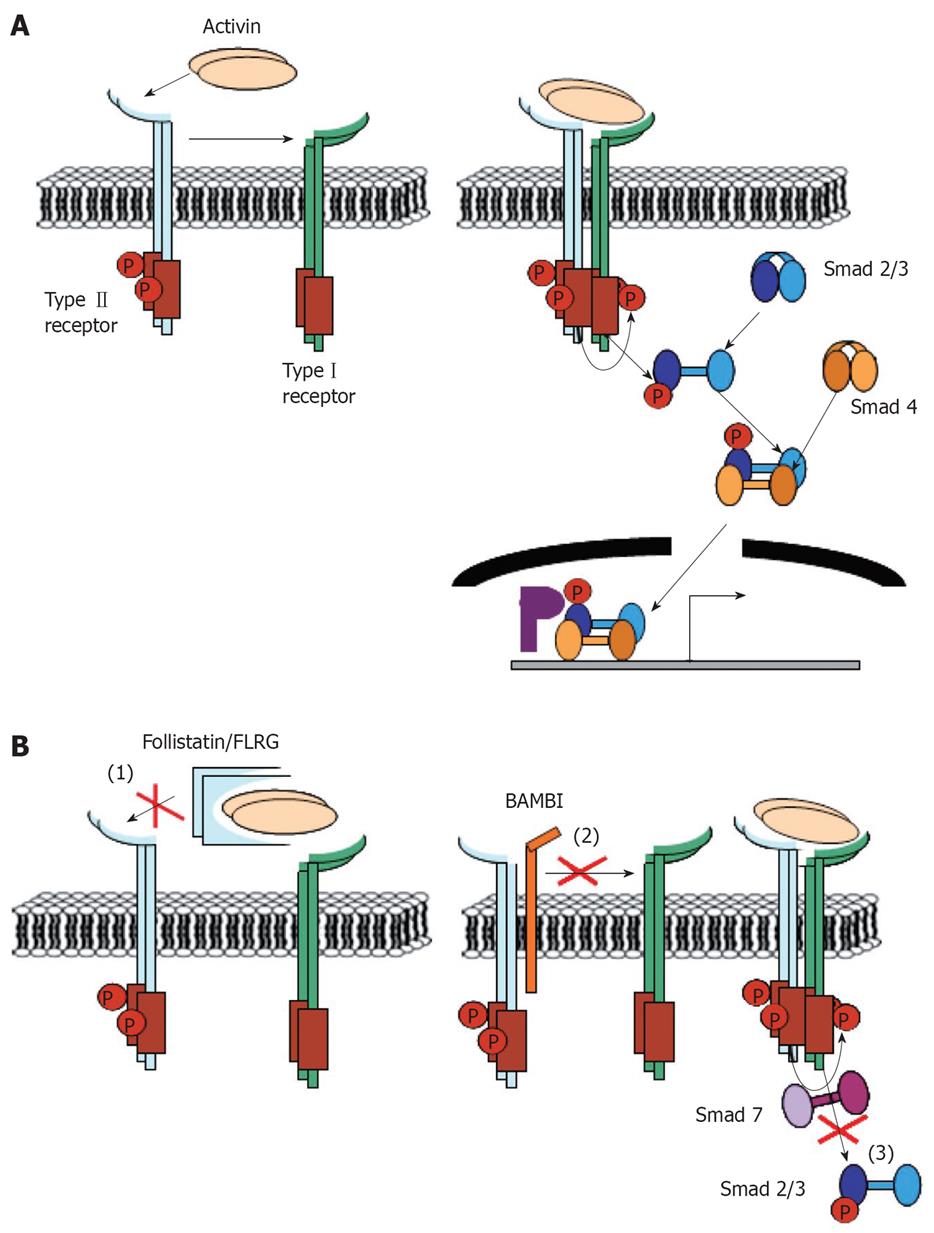Copyright
©2008 The WJG Press and Baishideng.
World J Gastroenterol. Mar 21, 2008; 14(11): 1699-1709
Published online Mar 21, 2008. doi: 10.3748/wjg.14.1699
Published online Mar 21, 2008. doi: 10.3748/wjg.14.1699
Figure 1 Graphic representation of activin signaling and interaction points with activin antagonists.
A: Activin dimers first bind the type II activin receptors, which then recruit and phosphorylate typeIreceptors. These in turn phosphorylate receptor-activated Smads, which subsequently form a complex with Smad 4 and are translocated to the nucleus, where they regulate the transcription of target genes; B: Activin antagonists can block activin signals by: (1) Binding activins in the extracellular space like follistatin or FLRG and thereby blocking their access to activin receptors; (2) Acting as inhibitory co-receptors, which prevent ligand receptor interactions (Cripto) or receptor dimerization (BAMBI); (3) Competing with receptor-activated Smads 2 and 3 for binding sites on activin receptors (Smad 7).
- Citation: Deli A, Kreidl E, Santifaller S, Trotter B, Seir K, Berger W, Schulte-Hermann R, Rodgarkia-Dara C, Grusch M. Activins and activin antagonists in hepatocellular carcinoma. World J Gastroenterol 2008; 14(11): 1699-1709
- URL: https://www.wjgnet.com/1007-9327/full/v14/i11/1699.htm
- DOI: https://dx.doi.org/10.3748/wjg.14.1699









